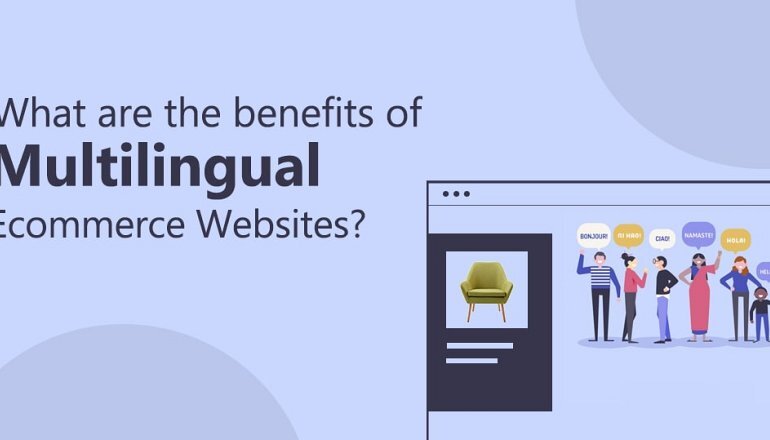
%17 %b
Multilingual e-commerce: how to sell worldwide
To be successful in online sales, it is crucial to have a multilingual e-commerce, as the global market has grown at an impressive rate in recent years.
Companies all over the world are realising the importance of expanding beyond national borders and reaching an international audience.
But what does this really mean and how can ecommerce in multiple languages help to sell around the world?
In this article, we will explore the importance of a multilingual e-commerce, how to structure it correctly and how to implement a multilingual SEO strategy.
What is a multilingual e-commerce?
A multilingual e-commerce is an online sales website that offers content translated into several languages. Instead of limiting itself to one language, multilingual e-commerce tries to adapt to the language preferences of visitors from different parts of the world automatically based on geolocalisation of the search. This allows the company to reach a wider audience, increasing sales possibilities.
What is a multilingual e-commerce for?
A multilingual e-commerce offers several advantages to companies that want to expand internationally. Firstly, it allows you to reach a wider audience. Every day, millions of people surf the Internet in languages other than their own. By offering your website in multiple languages, you are opening the door to potential customers who might otherwise not be able to understand or interact with your site.
Secondly, a multilingual e-commerce can increase consumer confidence. When a visitor sees that the site is available in their native language, a sense of familiarity and comfort is immediately created.
This can positively influence their decision to purchase or interact with the company. In addition, a multilingual site also demonstrates a commitment to international customers, who thus feel more considered and appreciated.
How to correctly structure a multilingual site
The correct structure of a multilingual site is crucial to ensure an optimal user experience. Here are some tips on how to structure your multilingual site:
- Uselanguage-specific URLs: when creating a multilingual site, it is important to use language-specific URLs. For instance, if you have one site in Italian and another in English, you could use "www.example.com/it" for Italian and "www.example.com/en" for English. This will help search engines understand which version of the site to show users based on their search language.
- Use hreflang tags: hreflang tags are an essential element of a multilingual site. These tags tell search engines which version of the website to show users based on their language and geographical location. Make sure you use hreflang tags correctly for each page of your multilingual site.
- Offer a language selector: To ensure a smooth user experience, it is important to offer a clearly visible language selector on your site. This will allow users to select the language they prefer to use and navigate between the different versions of the site.
Cuborio automatically creates all optimisations for a multilingual ecommerce. Simply activate one or more languages without publishing them, in order to complete the translation of all content before making it available to search engines and the public. One click takes you to the **SYSTEM** ⇒ **LANGUAGE LIST** section and at the languages to be activated just click on the relevant activation button and save.
Doing Multilingual SEO
In addition to proper site structure in multiple languages, it is also essential to implement an effective multilingual SEO strategy.
Here are some tips for doing multilingual SEO:
- Keyword research: Keyword research is crucial for any SEO strategy, but it is even more important when it comes to a multilingual site. you need to identify relevant keywords for each language and optimise your content accordingly.
- Uniquecontent for each language: Make sure you create unique content for each language. Simply translating content is not enough. Search engines reward sites with original, quality content. Adapting content to the needs and language preferences of different countries can improve your visibility and increase your chances of ranking in search results.
- Meta tag optimisation: Meta tags are important elements of SEO optimisation. Make sure to use unique meta tags for each language, including relevant keywords and an accurate description of the page content.
- Localisation of images and videos: If your site contains images and videos, make sure to localise them according to the language. This means that you should translate the texts in images and videos to make the experience more personalised for users of different nationalities.
- International link building: Building quality links from relevant websites in different languages can help improve your multilingual website's ranking. Look for international link building opportunities and collaborate with influencers and relevant websites to get quality links.
Cuborio is a CMS designed to simplify management by the site owner so that to translate a page into another language simply go to the backend at the top right and select the desired language from those available. Then click on the Main Menu under **Contents** ⇒ **Pages** 2. Click on a page to be translated. Pages marked in yellow are those yet to be translated into the selected language, those in green are those already translated. Now simply replace the text of the default language (usually Italian) with the text translated into the selected language and click **SALVE**
Conclusion
A multilingual e-commerce is a tremendous opportunity for companies that want to expand internationally. Offering visitors a personalised experience in their native language can increase trust, enhance the user experience and increase sales possibilities.
However, it is important to structure the site correctly and implement an effective multilingual SEO strategy to maximise results. Follow the tips provided in this article and get ready to reach a global audience with your multilingual e-commerce.





